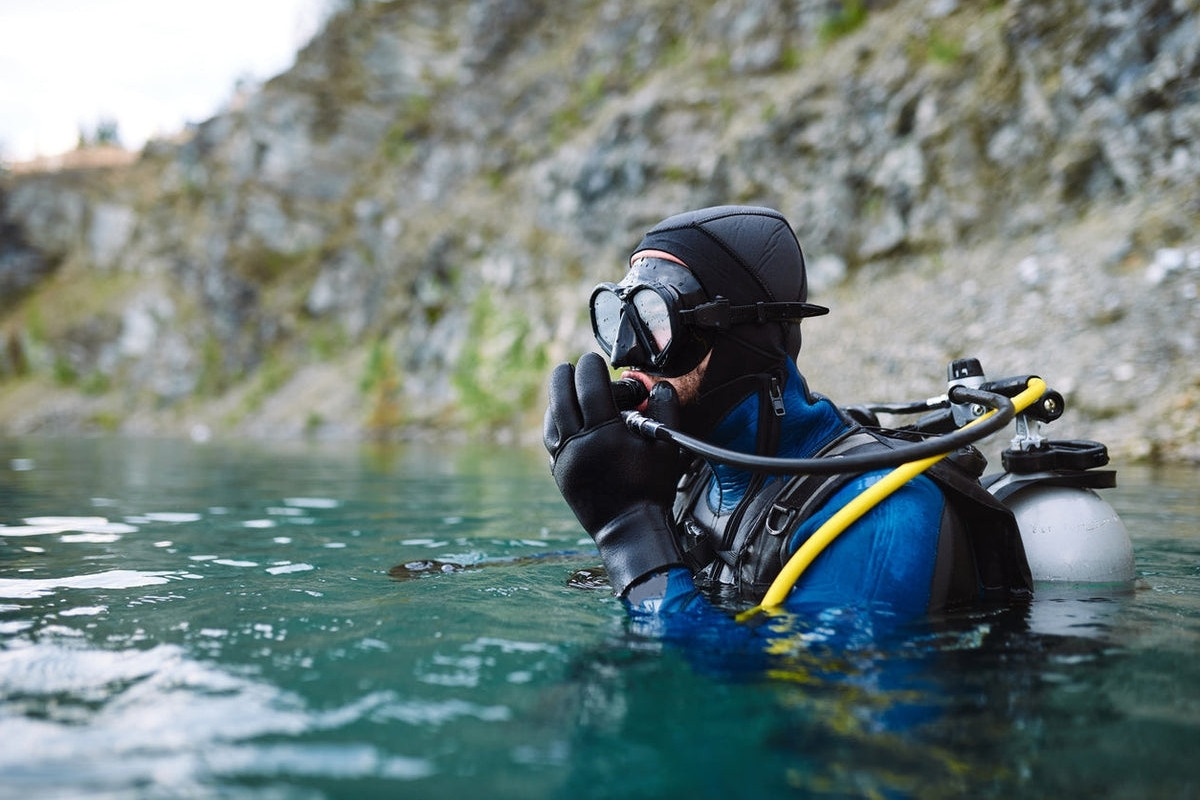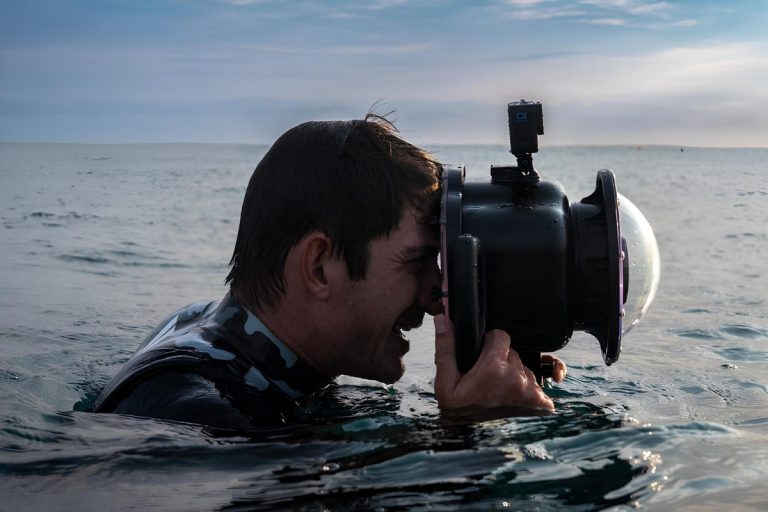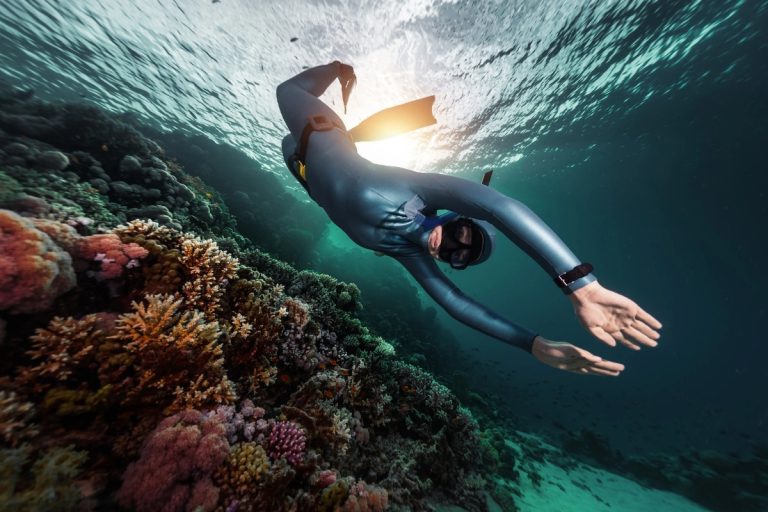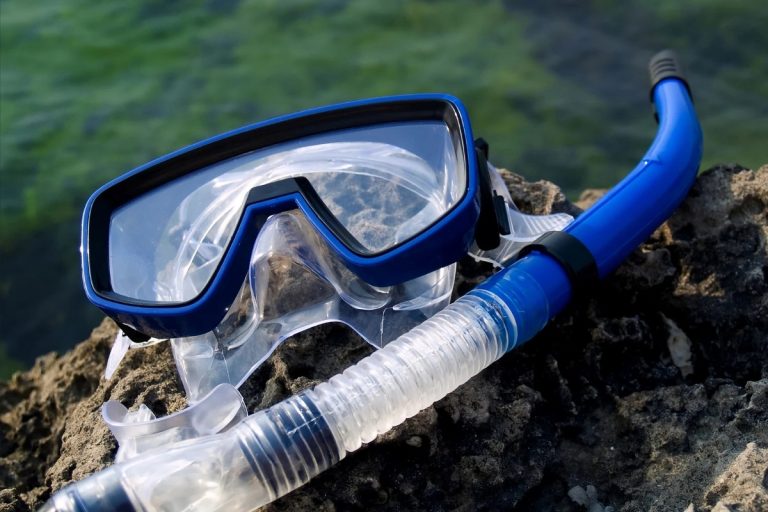Understanding Wetsuits
Wetsuits have been the go-to thermal protection for water enthusiasts for decades, offering a perfect balance of warmth, flexibility, and affordability. These form-fitting garments work on a simple yet effective principle that has made them popular among divers, surfers, and other water sports enthusiasts worldwide.
The key to a wetsuit’s effectiveness lies in its snug fit and unique thermal regulation system. Unlike other protective gear, wetsuits actually allow a small amount of water to enter, which then gets trapped between your skin and the suit material. Your body heat warms this thin layer of water, creating an insulating barrier that helps maintain your core temperature during extended periods in the water.
Modern wetsuits come in various thicknesses and styles, from lightweight shorties perfect for tropical diving to full-coverage suits designed for temperate waters. Understanding how wetsuits function and when they perform best can help you make informed decisions about your scuba diving gear basics and ensure comfortable underwater experiences.
Material Composition of Wetsuits
Neoprene forms the backbone of wetsuit construction, a synthetic rubber material that provides excellent insulation properties while maintaining flexibility. This closed-cell foam contains thousands of tiny gas bubbles that trap air, creating natural insulation even when compressed underwater.
Modern wetsuits often feature different neoprene grades and thicknesses depending on their intended use. Higher-quality neoprene offers better stretch, durability, and thermal properties, while budget options may use less flexible materials that can restrict movement.
Many wetsuits incorporate additional materials like nylon or polyester linings for durability and comfort. These fabric layers protect the delicate neoprene from wear and make the suit easier to put on and take off.
How Wetsuits Function
The thermal regulation system of wetsuits relies on controlled water entry and body heat retention. When you first enter the water, cold water seeps into the suit through the neck, wrists, and ankles. This initial shock quickly subsides as your body heat warms the trapped water layer.
The neoprene material itself provides additional insulation through its cellular structure. Even if water circulation occurs within the suit, the neoprene continues to offer thermal protection by reducing heat transfer to the surrounding environment.
Proper fit plays a crucial role in wetsuit performance. A suit that’s too loose allows excessive water circulation, reducing thermal efficiency, while an overly tight suit can restrict blood flow and cause discomfort during extended use.
Best Uses for Wetsuits
Wetsuits excel in water temperatures ranging from 60 to 80 degrees Fahrenheit, making them ideal for tropical and temperate diving conditions. They’re particularly well-suited for surface water sports where mobility and flexibility take precedence over maximum thermal protection.
Recreational divers often prefer wetsuits for shallow, warm-water diving where the simplified gear requirements and ease of use outweigh the thermal limitations. They’re also excellent for snorkeling, surfing, and other activities that involve frequent surface interaction.
The versatility of wetsuits makes them perfect for travelers who need reliable thermal protection without the complexity and bulk of dry suit systems. Many dive operators in popular destinations provide wetsuit rentals, making them accessible for occasional divers.
Advantages of Using Wetsuits
Flexibility stands out as one of the primary advantages of wetsuit use. The stretchy neoprene material allows natural movement underwater, making swimming, finning, and equipment manipulation feel more intuitive compared to bulkier alternatives.
Cost-effectiveness makes wetsuits attractive to budget-conscious divers. Quality wetsuits cost significantly less than dry suits while providing adequate thermal protection for many diving conditions. This affordability extends to maintenance, as wetsuits require minimal specialized care.
Simplicity in use appeals to many divers, especially beginners. Wetsuits don’t require additional training or certification, and their straightforward design eliminates the complexity associated with air management and buoyancy control found in other thermal protection systems.
Disadvantages of Wetsuits
Thermal limitations become apparent in colder water conditions where wetsuits struggle to provide adequate warmth. As water temperature drops below 60 degrees Fahrenheit, even thick wetsuits may not prevent hypothermia during extended exposure.
Compression effects at depth reduce the insulating properties of neoprene, making wetsuits less effective for deep diving. The gas bubbles within the material compress under pressure, reducing thermal efficiency when you need it most.
Durability concerns arise with frequent use, as neoprene can degrade over time when exposed to sunlight, chemicals, and mechanical stress. Tears, punctures, and seam failures can compromise both thermal protection and suit longevity.
Understanding Drysuits
Drysuits represent the pinnacle of thermal protection for cold-water diving, offering unmatched warmth retention through innovative design and advanced materials. Unlike wetsuits, these sophisticated garments keep you completely dry while providing customizable insulation levels to match varying conditions and personal preferences.
The fundamental difference lies in their approach to thermal regulation. Rather than relying on trapped water layers, drysuits create a sealed environment around your body, allowing you to wear insulating undergarments that maintain their thermal properties regardless of external water temperature or diving depth.
This technology opens up diving opportunities in conditions where wetsuits would be inadequate or dangerous. From ice diving in polar regions to extended technical dives in temperate waters, drysuits enable divers to explore environments that would otherwise be off-limits due to thermal constraints.
Material Composition of Drysuits
Drysuits utilize various materials depending on their intended application and price point. Neoprene drysuits offer excellent durability and abrasion resistance, making them popular for commercial diving and rugged recreational use. The thicker neoprene provides inherent insulation while maintaining the sealed environment.
Trilaminate drysuits combine multiple fabric layers to create lightweight, flexible shells with excellent tear resistance. These suits typically feature an outer protective layer, a waterproof membrane, and an inner comfort lining that works together to provide reliable dry protection.
Membrane drysuits use advanced synthetic materials that prioritize flexibility and packability over inherent insulation. These suits rely entirely on undergarments for thermal protection, making them highly versatile across different temperature ranges and diving conditions.
How Drysuits Function
The sealed design of drysuits prevents water entry through waterproof zippers, wrist seals, and neck seals made from latex or neoprene. This complete water exclusion allows divers to wear regular clothing or specialized thermal undergarments underneath the suit.
Air management systems built into drysuits allow divers to add or release air as needed for buoyancy control and comfort. Inflator valves connect to your regulator system, while exhaust valves automatically or manually release excess air during ascent.
Thermal regulation occurs through the air space within the suit and the insulating properties of chosen undergarments. This system provides consistent warmth regardless of depth, as the air space can be maintained through proper buoyancy techniques.
Best Uses for Drysuits
Cold-water diving represents the primary application for drysuits, particularly in temperatures below 60 degrees Fahrenheit where wetsuit protection becomes inadequate. Ice diving, polar expeditions, and cold-water technical diving all require the superior thermal protection that only drysuits can provide.
Extended dive profiles benefit from drysuit thermal consistency. Technical divers, scientific researchers, and commercial divers who spend hours underwater rely on drysuits to maintain core body temperature during long-duration exposures.
Multi-dive scenarios, such as liveaboard trips or intensive training courses, favor drysuits because they eliminate the thermal stress associated with repeatedly getting wet and cold. Divers stay warm and comfortable between dives, reducing fatigue and improving safety margins.
Advantages of Using Drysuits
Superior thermal protection stands as the primary advantage of drysuit diving. The combination of complete water exclusion and customizable insulation allows comfortable diving in conditions that would be dangerous or impossible with wetsuits.
Versatility across temperature ranges makes drysuits excellent investments for divers who encounter varying conditions. By adjusting undergarment thickness, the same suit can provide comfort in both moderate and extremely cold waters.
Extended dive capability results from consistent thermal protection. Divers can focus on their underwater activities without the distraction of progressive cooling that occurs with wetsuit diving in marginal temperature conditions.
Disadvantages of Drysuits
Training requirements represent a significant barrier for many divers. Proper drysuit use involves mastering buoyancy control, air management, and emergency procedures that require specialized instruction and practice to perform safely.
Higher costs make drysuits a substantial investment compared to wetsuits. Quality drysuits cost several times more than equivalent wetsuits, and this expense extends to required undergarments, accessories, and maintenance supplies.
Complexity in use can overwhelm novice divers. Managing air in the suit while controlling overall buoyancy requires coordination and experience that takes time to develop. Poor technique can lead to dangerous situations including uncontrolled ascents or suit squeeze.
Temperature Considerations
Water temperature serves as the primary factor in determining appropriate thermal protection for diving activities. Understanding the relationship between temperature, exposure time, and individual tolerance helps divers make informed decisions about wetsuit versus drysuit selection for specific diving conditions.
The human body loses heat approximately 25 times faster in water than in air, making thermal protection crucial for safe diving. Even seemingly warm water can lead to hypothermia during extended exposure, while cold water can quickly become life-threatening without adequate protection.
Individual factors such as body composition, fitness level, and cold tolerance significantly influence thermal protection needs. What feels comfortable for one diver may be inadequate for another, making personal experience and honest self-assessment important components of suit selection.
Water Temperature Guidelines
Water temperatures above 80 degrees Fahrenheit typically require minimal thermal protection, though thin wetsuits or rash guards can provide sun protection and minor thermal benefits during extended surface intervals or shallow diving.
The 70-80 degree range represents optimal wetsuit conditions where 3mm to 5mm suits provide comfortable thermal protection for most recreational diving activities. This temperature range allows extended bottom times without significant thermal stress.
Temperatures between 60-70 degrees require thicker wetsuits (5mm to 7mm) or consideration of drysuit options depending on dive duration and individual cold tolerance. Many divers find this range challenging for extended exposure in wetsuits alone.
Below 60 degrees Fahrenheit, drysuits become the preferred choice for safe, comfortable diving. While thick wetsuits may provide short-term protection, the risk of hypothermia increases significantly during extended exposure to these temperatures.
Impact of Temperature on Suit Choice
Thermal comfort directly affects dive safety and enjoyment. Cold divers make poor decisions, experience reduced dexterity, and face increased risk of decompression illness due to altered circulation patterns and gas absorption rates.
Temperature stability throughout the dive profile influences suit selection. Drysuits maintain consistent thermal protection regardless of depth, while wetsuit effectiveness decreases as neoprene compresses under pressure.
Surface interval comfort becomes important during multi-dive days. Wet, cold divers between dives experience greater thermal stress and fatigue, potentially compromising safety on subsequent dives.
Seasonal Considerations for Diving
Spring diving often presents challenging conditions as water temperatures lag behind air temperatures. What appears to be pleasant diving weather may hide surprisingly cold water conditions that require more thermal protection than expected.
Summer diving in temperate regions may still require significant thermal protection, particularly for deeper dives where thermoclines create dramatic temperature variations. Many divers underestimate thermal needs during warm weather.
Fall and winter diving typically demand maximum thermal protection. Even in moderate climates, water temperatures can drop to levels requiring drysuit protection for safe, comfortable diving experiences.
Temperature’s Effect on Comfort
Thermal comfort affects every aspect of the diving experience, from pre-dive preparation through post-dive recovery. Comfortable divers can focus on their underwater activities rather than fighting cold-related stress and distraction.
Performance degradation occurs as body temperature drops, affecting everything from fine motor skills needed for equipment operation to cognitive function required for problem-solving and navigation.
Recovery time increases significantly when divers become chilled during diving activities. Cold stress can persist long after the dive ends, affecting subsequent activities and overall trip enjoyment.
Cost Analysis
The financial investment in thermal protection represents a significant consideration for most divers, with costs varying dramatically between wetsuit and drysuit options. Understanding the total cost of ownership, including initial purchase, accessories, maintenance, and replacement cycles, helps divers make informed decisions that balance budget constraints with performance needs.
Initial purchase price represents just the beginning of thermal protection costs. Accessories, training, maintenance supplies, and eventual replacement must all factor into the long-term financial commitment associated with either wetsuit or drysuit diving.
Value considerations extend beyond simple price comparisons to include factors such as diving frequency, typical conditions, and intended use patterns. A more expensive option may provide better value for divers who frequently encounter conditions where superior performance justifies the additional investment.
Price Range of Wetsuits
Entry-level wetsuits start around $50-100 for basic designs suitable for warm-water recreational diving. These budget options typically feature thinner neoprene, simpler construction, and fewer comfort features, but provide adequate protection for occasional use.
Mid-range wetsuits ($150-400) offer improved materials, better fit, and enhanced durability. These suits often feature higher-grade neoprene, reinforced stress points, and comfort improvements that justify their higher cost for regular divers.
Premium wetsuits ($400-800) incorporate advanced materials, superior construction techniques, and specialized features for specific applications. These high-end options provide maximum performance and durability for serious divers who demand the best thermal protection available.
Custom wetsuit options can exceed $1000 but provide perfect fit and personalized features. For divers with unusual body proportions or specific requirements, custom suits may offer better value than multiple off-the-rack purchases.
Price Range of Drysuits
Basic drysuits start around $800-1200 for entry-level models suitable for recreational cold-water diving. These suits provide essential dry protection but may lack advanced features and premium materials found in higher-end options.
Mid-range drysuits ($1200-2500) offer improved materials, better seals, and enhanced comfort features. These suits typically provide excellent value for regular cold-water divers who need reliable performance without premium pricing.
High-end drysuits ($2500-5000+) feature advanced materials, superior construction, and specialized designs for technical or commercial diving applications. These premium options justify their cost through enhanced durability, comfort, and performance.
Professional-grade drysuits can exceed $5000 and include specialized features for commercial, military, or extreme environment applications. These suits represent the pinnacle of drysuit technology and performance.
Cost vs. Performance
Performance per dollar varies significantly between wetsuit and drysuit options depending on individual diving patterns and requirements. Frequent cold-water divers may find drysuits provide better long-term value despite higher initial costs.
Durability considerations affect long-term value calculations. Quality drysuits often last much longer than wetsuits, potentially providing better value over extended use periods despite higher upfront investment.
Versatility factors into value equations for divers who encounter varying conditions. A single drysuit with different undergarments may replace multiple wetsuits, simplifying gear requirements and potentially reducing total costs.
Long-term Investment Considerations
Replacement cycles differ significantly between wetsuits and drysuits. Wetsuits typically require replacement every 2-5 years depending on use frequency and care, while quality drysuits may last 10-15 years with proper maintenance.
Accessory costs add to the total investment for both suit types. Drysuits require undergarments, hoods, gloves, and boots that can add $200-500 to the initial investment, while wetsuits need fewer specialized accessories.
Training costs must be factored into drysuit investments. Required certification courses add $200-400 to the total cost but provide essential skills for safe drysuit diving.
Training and Skill Level
The complexity difference between wetsuit and drysuit diving creates distinct training requirements that significantly impact diver safety and comfort. While wetsuits require no specialized training beyond basic scuba certification, drysuits demand additional skills and knowledge that must be properly developed before safe use.
Understanding these training requirements helps divers make informed decisions about thermal protection options and ensures they develop appropriate skills for their chosen equipment. Inadequate training represents one of the primary risk factors in drysuit diving accidents.
The learning curve associated with drysuit diving varies among individuals, but most divers require several training dives and continued practice to develop proficiency. This skill development process should factor into decisions about when and how to transition from wetsuit to drysuit diving.
Training Requirements for Drysuits
Specialized certification becomes mandatory for safe drysuit diving. Most training agencies require completion of a drysuit specialty course before divers can rent or use drysuits through dive operations, ensuring basic competency in essential skills.
Buoyancy control techniques specific to drysuit diving must be mastered before independent diving. Managing air in both the buoyancy compensator and drysuit requires coordination and practice that differs significantly from wetsuit diving techniques.
Emergency procedures for drysuit diving include skills such as managing runaway ascents, dealing with seal failures, and handling suit squeeze situations. These emergency responses require specific training and regular practice to maintain proficiency.
PADI Dry Suit Diver Course Overview
The PADI Dry Suit Diver course provides comprehensive training in drysuit selection, use, and maintenance. Students learn about different suit types, proper fitting techniques, and care procedures that extend suit life and maintain performance.
Practical skills development includes confined water sessions where students practice donning and doffing procedures, buoyancy control techniques, and emergency responses in a controlled environment before progressing to open water training.
Open water training dives allow students to apply learned skills in realistic diving conditions. These supervised practice sessions help develop confidence and competency while ensuring safety through instructor oversight and guidance.
Skills Needed for Safe Drysuit Diving
Air management skills become crucial for drysuit divers who must control air in both their buoyancy compensator and suit. Understanding when and how much air to add or remove requires experience and good judgment that develops over time.
Buoyancy control precision increases in importance with drysuit diving. The additional air space and potential for rapid buoyancy changes demand more refined control techniques than typically required for wetsuit diving.
Pre-dive inspection procedures for drysuits involve checking seals, zippers, and valves that don’t exist on wetsuits. Developing thorough inspection habits prevents problems that could compromise dive safety or comfort.
Wetsuit Diving Skills
Basic thermal management with wetsuits involves understanding fit requirements and recognizing signs of thermal stress. While simpler than drysuit management, proper wetsuit use still requires knowledge and attention to safety factors.
Entry and exit techniques for wetsuits focus on preventing damage during donning and doffing procedures. Proper care during these processes extends suit life and maintains thermal performance throughout the suit’s service life.
Maintenance awareness helps wetsuit divers recognize when their thermal protection may be compromised. Understanding signs of wear, damage, or degradation ensures divers replace equipment before it becomes a safety liability.
Maintenance and Care
Proper maintenance significantly extends the life and performance of both wetsuits and drysuits while ensuring continued safety and comfort during diving activities. The care requirements differ substantially between suit types, with drysuits generally requiring more specialized attention and maintenance procedures.
Understanding maintenance requirements before purchasing thermal protection helps divers budget for ongoing costs and develop appropriate care routines. Neglected maintenance can lead to premature failure, compromised performance, and potential safety hazards.
Regular maintenance schedules and proper storage techniques can double or triple the useful life of quality thermal protection. The time invested in proper care pays dividends through extended equipment life and maintained performance characteristics.
Maintaining Wetsuits
Rinse procedures after each use remove salt, sand, and other contaminants that can degrade neoprene over time. Fresh water rinsing, both inside and outside, prevents chemical buildup that causes material breakdown and unpleasant odors.
Drying techniques affect wetsuit longevity significantly. Proper drying away from direct sunlight and heat sources prevents neoprene degradation while ensuring complete moisture removal that prevents mold and bacterial growth.
Storage methods protect wetsuits from damage during periods of non-use. Hanging on appropriate hangers or laying flat prevents stress concentration that can cause tears or permanent deformation of the neoprene material.
Maintaining Drysuits
Zipper maintenance represents the most critical aspect of drysuit care. Regular cleaning, lubrication with appropriate products, and careful operation prevent the expensive zipper failures that can render suits unusable.
Seal inspection and replacement schedules ensure continued water-tight integrity. Latex and neoprene seals have limited lifespans and require regular examination for signs of wear, cracking, or other damage that could cause catastrophic failure.
Valve servicing maintains proper function of inflation and deflation systems. Annual professional servicing or careful owner maintenance keeps these critical components operating safely and reliably.
Common Repairs for Both Suits
Tear repairs require different techniques depending on suit material and damage location. Small punctures can often be field-repaired with appropriate patches and adhesives, while larger tears may require professional repair services.
Seam failures represent common problems in both suit types, particularly at high-stress areas such as shoulders and crotch regions. Professional repair services can often restore structural integrity, though prevention through proper care remains preferable.
Zipper problems range from simple cleaning and lubrication issues to complete replacement requirements. Understanding when repairs are feasible versus when replacement becomes necessary helps divers make cost-effective maintenance decisions.
Storage Tips for Suits
Climate control during storage prevents damage from temperature extremes and humidity fluctuations. Consistent, moderate temperatures and low humidity levels preserve material properties and prevent degradation during extended storage periods.
Pest prevention becomes important for suits stored in areas where rodents or insects might cause damage. Proper storage containers or sealed bags protect valuable thermal protection from unexpected damage sources.
Periodic inspection during storage periods allows early detection of problems such as mold growth, material degradation, or pest damage. Regular checks enable prompt corrective action before minor issues become major problems.
Comfort and Fit
The relationship between comfort, fit, and thermal protection performance cannot be overstated in diving equipment selection. Properly fitted thermal protection enhances safety, improves diving enjoyment, and maximizes the effectiveness of chosen equipment across various diving conditions.
Fit requirements differ substantially between wetsuits and drysuits, with each requiring different approaches to sizing, adjustment, and customization. Understanding these differences helps divers make appropriate selections and avoid common fitting problems that compromise performance.
Comfort factors extend beyond simple fit to include mobility, breathability, and psychological factors that affect diver confidence and enjoyment. The best thermal protection combines proper fit with features that enhance the overall diving experience.
Finding the Right Fit for Wetsuits
Snug fit requirements for wetsuits demand careful attention to sizing across multiple body dimensions. Unlike regular clothing, wetsuits must fit tightly to minimize water circulation while allowing sufficient flexibility for comfortable movement and breathing.
Measurement techniques for wetsuit sizing involve multiple body dimensions including chest, waist, hips, and limb measurements. Many manufacturers provide detailed sizing charts that help divers select appropriate sizes based on comprehensive measurements.
Trying on procedures help identify fit problems before purchase. Proper wetsuit fitting involves checking for gaps, excessive tightness, and range of motion limitations that could affect comfort or thermal performance.
Finding the Right Fit for Drysuits
Loose fit requirements for drysuits allow space for insulating undergarments while maintaining seal integrity at wrists, neck, and ankles. The fit balance between too loose (reducing thermal efficiency) and too tight (restricting movement) requires careful consideration.
Seal fitting represents the most critical aspect of drysuit sizing. Properly fitted seals prevent water entry while allowing comfortable movement and adequate circulation. Poor seal fit can cause leaks or dangerous circulation restriction.
Undergarment considerations affect drysuit sizing decisions. The suit must accommodate varying thicknesses of thermal undergarments while maintaining proper fit and seal function across different insulation levels.
Comfort Factors in Suit Choice
Mobility requirements vary among diving activities and individual preferences. Technical divers may prioritize flexibility for equipment manipulation, while recreational divers might emphasize thermal comfort over maximum mobility.
Psychological comfort affects diver confidence and safety. Divers who feel comfortable and confident in their thermal protection can focus on diving activities rather than equipment concerns or thermal stress.
Break-in periods differ between suit types and materials. Some suits require several uses to achieve optimal comfort and fit, while others provide immediate comfort from first use.
Adjustability and Features
Adjustment mechanisms in modern thermal protection allow customization for improved fit and comfort. Features such as adjustable neck closures, wrist adjustments, and waist belts help optimize fit across varying body types.
Feature integration enhances functionality and convenience. Pockets, attachment points, and integrated accessories can significantly improve the diving experience when properly selected and positioned.
Customization options range from simple alterations to complete custom manufacturing. Understanding available customization helps divers achieve optimal fit and functionality for their specific needs and preferences.
Final Considerations
The decision between wetsuit and drysuit protection ultimately depends on a complex interplay of factors including diving environment, personal preferences, skill level, and budget considerations. No single solution works optimally for all divers or all conditions, making informed decision-making crucial for diving safety and enjoyment.
Successful thermal protection selection requires honest assessment of diving goals, typical conditions, and personal limitations. Divers who accurately evaluate their needs and choose appropriate equipment enjoy safer, more comfortable diving experiences across a wider range of conditions.
The evolution of diving activities often drives changes in thermal protection needs. Divers should consider not only current requirements but also potential future needs as skills develop and diving interests expand into new environments or activities.
Suit Selection Based on Diving Style
Recreational diving in warm, tropical conditions typically favors wetsuit protection due to simplicity, cost-effectiveness, and adequate thermal performance. The ease of use and minimal training requirements make wetsuits ideal for vacation diving and casual participation.
Technical diving activities often require drysuit protection due to extended bottom times, deeper depths, and colder water conditions commonly encountered. The superior thermal protection and depth-independent performance justify the additional complexity and cost.
Professional diving applications usually mandate drysuit protection for safety and performance reasons. Commercial divers, scientific researchers, and dive professionals need reliable thermal protection that performs consistently across varying conditions and extended exposure periods.
Environmental Considerations
Water temperature patterns in typical diving locations strongly influence appropriate thermal protection choices. Divers who primarily visit warm-water destinations may find wetsuits adequate, while those exploring temperate or cold-water environments need drysuit capabilities.
Seasonal variations affect thermal protection needs even in relatively stable climates. Understanding annual temperature cycles helps divers select equipment that remains appropriate throughout their typical diving season.
Geographic flexibility becomes important for traveling divers who encounter varying conditions. Versatile thermal protection or multiple suit options may be necessary for divers who regularly visit diverse diving environments.
Personal Preference and Experience
Individual cold tolerance varies significantly among divers and affects appropriate thermal protection choices. Divers who are naturally cold-sensitive may require more thermal protection than others in identical conditions.
Experience level influences both equipment selection






